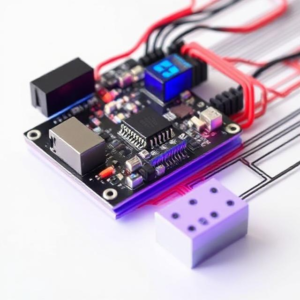1. What is a Power Supply?
A power supply is an electronic device that provides the necessary power to run other devices or circuits. It converts electrical energy (usually from an AC outlet) into a form that the device can use, typically DC (Direct Current) power.
Now, there are two main types of power supplies: linear and switching. They both do the same job (convert AC to DC), but they work in different ways and have different strengths and weaknesses.

2. Linear Power Supplies
- A linear power supply works by directly converting the incoming AC voltage into a lower, stable DC voltage.
- It does this using components like a transformer, diode, and regulator.
How Does It Work?
- First, the transformer steps down the high AC voltage from the wall to a lower AC voltage.
- Then, the diode (which acts as a rectifier) converts that AC voltage into DC.
- The regulator then smooths out the fluctuations in the DC voltage, providing a stable output.
The key here is that the voltage is regulated by dissipating excess energy as heat. The voltage gets “filtered” down to the desired level, but the process isn’t very efficient, especially if there’s a big difference between the input and output voltage.
Pros of Linear Power Supplies:
- Stable output: They provide a very clean and steady DC voltage with little ripple (fluctuations in the voltage).
- Simple design: They are relatively simple and easy to build and understand.
- Low noise: Since they don’t use high-frequency switching, they produce very little electrical noise, which is important for sensitive equipment like audio or radio devices.
Cons of Linear Power Supplies:
- Less efficient: Linear supplies waste energy as heat. If you need a lot of power, they become inefficient, as the excess energy has to be dissipated as heat. For example, if you’re stepping down 12V to 5V, the excess 7V gets turned into heat.
- Bulky: To handle more power, linear supplies require larger transformers and heat dissipation systems (like heatsinks), making them bulky.
- Heat generation: Because of the inefficiency, they generate a lot of heat, which can be problematic in some applications.
3. Switching Power Supplies
A switching power supply works very differently. Instead of dissipating excess energy as heat, it uses a process called switching to efficiently convert AC to DC.
How Does It Work?
- The incoming AC voltage is first converted into high-frequency AC using a switching transistor.
- This high-frequency AC is then transformed into a lower voltage using a transformer.
- The resulting voltage is rectified (converted to DC) and then smoothed to produce the stable DC output.
The key difference is that the switching power supply doesn’t waste energy as heat like linear supplies. Instead, it only “switches” the current on and off very quickly (at high frequencies), which is much more efficient.
Pros of Switching Power Supplies:
- High efficiency: They are much more efficient than linear supplies. They waste very little energy, so they don’t generate as much heat. This makes them ideal for high-power applications.
- Compact size: Because they’re more efficient, switching power supplies can be smaller and lighter than linear ones, even for higher power applications.
- Versatile: They can easily step up (increase) or step down (decrease) voltage, and are commonly used for a wide range of applications, including computers, phones, and chargers.
Cons of Switching Power Supplies:
- Complex design: Switching power supplies are more complicated than linear ones. They require components like inductors, capacitors, and high-frequency switches.
- Noise: They produce more electrical noise due to the high-frequency switching, which can interfere with sensitive devices (like audio equipment or radios).
- Ripple: While switching supplies are efficient, they can have a little more ripple in the DC output compared to linear supplies, although this is often not an issue for most devices.
4. Key Differences Between Linear and Switching Power Supplies
| Feature | Linear Power Supply | Switching Power Supply |
|---|---|---|
| Efficiency | Low (wastes energy as heat) | High (minimal heat generation) |
| Size | Bulky (large transformers and heatsinks needed) | Compact and lightweight |
| Noise | Low (clean DC output) | Higher (due to switching noise) |
| Heat Generation | High (needs cooling) | Low (efficient energy conversion) |
| Complexity | Simple | Complex (requires additional components) |
| Cost | Typically cheaper for small power levels | Can be more expensive for small applications |
| Applications | Sensitive devices (e.g., audio equipment) | High-power or compact devices (e.g., computers, chargers) |
5. Which One Should You Use?
- Linear Power Supply: Ideal for applications that need very clean and stable DC voltage with minimal noise, such as audio equipment or analog circuits. They are also good for low-power applications where efficiency isn’t as important.
- Switching Power Supply: Best for high-power or portable applications, such as computers, phone chargers, or power supplies for large devices. They are efficient, compact, and can handle a wide range of input voltages.
Summary:
- Linear power supplies are simple, stable, and produce clean output but are less efficient and generate more heat.
- Switching power supplies are more efficient, compact, and versatile, but they can create more noise and are more complex.











